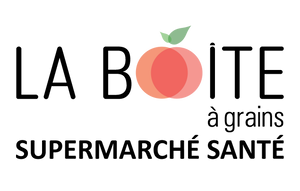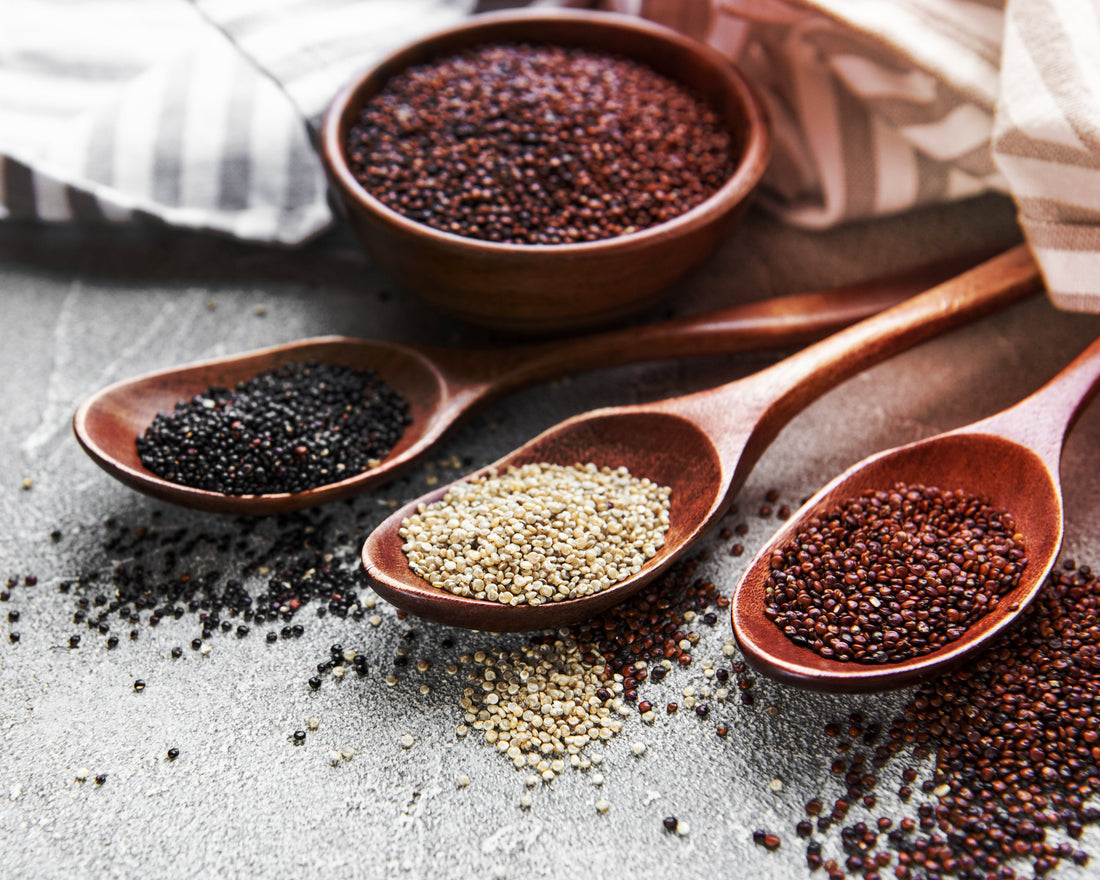Unlikerice andwheatQuinoa is not a grass. It is rather considered a "pseudo-cereal". Quinoa is worth knowing because it contains a large amount of high quality protein, polyunsaturated fatty acids and many micronutrients. Because of its nutritional composition, which is somewhat different from that of other grains, and its unique taste, its inclusion in the diet allows for variety in the menu.
Active ingredients and properties
Grain products are of great importance to our diet. One of Health Canada's dietary recommendations for the health of Canadians is to give "the greatest share to cereals, breads and other grain products as well as vegetables and fruits".1. TheCanada's Food Guide to Healthy Eating reflects this recommendation and emphasizes the choice of whole grain or enriched grain products2. The U.S. authorities recommend that at least half of the grain products consumed should be whole grain.3.
These recommendations are based on the results of someepidemiological studies studies that indicate that whole grain consumption is associated with a lower risk ofcardiovascular disease anddiabetes4and somecancers5,6 andobesity7,8. These beneficial effects would be related to the synergy between the numerous compounds contained in whole grain products, such as fiber, vitamins and minerals.antioxidantsvitamins and minerals. As most of these compounds are contained in the bran and germ9it is better to consume the least refined cereals possible.
Dietary fiber. A 125 ml serving of quinoa contains an amount of fibre that is close to that of a slice of whole wheat bread or 125 ml of cooked brown rice. The types of fibre found in quinoa flour may improve the digestion and absorption of this "pseudo-cereal" in the large intestine10,11. In general, a diet rich in soluble fibre can help withcardiovascular diseases andtype 2 diabetes normalizing blood levels of cholesterol, glucose and insulin12. Insoluble fibers, on the other hand, would help maintain adequate intestinal function. A diet rich in fiber is also associated with a lower risk ofcolon cancer12. Finally, even if they do not contain calories, a high intake of total fiber would bring a greater feeling of satiety12.
Protein. Quinoa contains about 15% protein and its amino acid composition is better balanced than most other grains, such asmilletsorghum, rice, wheat and corn.corn10,13-15. Proteins are mainly used to form, repair and maintain tissues such as skin, muscles and bones. They are also used to form digestive enzymes and hormones. The Food and Agriculture Organization of the United Nations (FAO) has observed that quinoa proteins, with or without saponins16 (see below for definition of saponins), would be equivalent in quality to those contained in whole milk powder14,17. However, this does not mean that quinoa can replacemilk and dairy products in a balanced diet. Quinoa and milk come from two different food groups, each providing essential nutrients to the body. Quinoa is rich inessential amino acids. An amino acid is said to be essential when the body cannot produce it itself and it must be provided by the diet. Quinoa has a high content oflysinean amino acid often missing in grain products such as wheat and corn. Quinoa also has a good content ofmethionineincystineinarginineinhistidine and inisoleucinewhich would make it a perfect complement for legumes that have a low proportion of some of these essential amino acids15,17,18. Quinoa has a low percentage ofprolamins (kind of proteins), which indicates that it isgluten free and therefore interesting for people who suffer fromceliac disease15. In a study on satiety, eating quinoa before a meal did not produce a more satiating effect than eating a similar amount of rice, despite its higher protein (as well as fiber) content19. Some macronutrients, including protein, have a greater satiating effect than others20-23. Quinoa, given its high protein content, could therefore potentially have an effect on satiety and therefore on food intake compared to other cereals. This hypothesis deserves to be studied further.
Most important nutrients
See the meaning of the classification symbols of the sources of nutrients
Manganese. Quinoa is aexcellent source of manganese for thewoman and agood source for themantheir needs being different. Manganese acts ascofactor of severalenzymes that facilitate a dozen different metabolic processes. It also participates in the prevention of damage caused byfree radicals.
Iron. The quinoa is agood source ofiron for theman and a normal source for women; their needs being different. Every cell in the body contains iron. This mineral is essential for the transport of oxygen and the formation of red blood cells in the blood. It also plays a role in the manufacture of new cells, hormones and neurotransmitters (messengers in nerve impulses).
Copper. The quinoa is agood source of copper. As a component of several enzymes, copper is necessary for the formation of hemoglobin and collagen (a protein used for tissue structure and repair) in the body. Several copper-containing enzymes also contribute to the body's defense against free radicals.
Phosphorus. Quinoa is a source of phosphorus (see ourNutrients list Phosphorus). The second most abundant mineral in the body after calcium, phosphorus plays an essential role in the formation and maintenance of healthy bones and teeth. In addition, it participates in the growth and regeneration of tissues and helps to maintain normalpHof the blood. Finally, phosphorus is one of the constituents of cell membranes.
Magnesium. Quinoa is a source ofmagnesium. Magnesium is involved in bone development, protein building, enzymatic actions, muscle contraction, dental health and immune system function. It also plays a role in energy metabolism and in the transmission of nerve impulses.
Zinc. Quinoa is a source ofzinc. Zinc is involved in immune reactions, the manufacture of genetic material, taste perception, wound healing and fetal development. It also interacts with sex and thyroid hormones. In the pancreas, it is involved in the synthesis (manufacture), storage and release of insulin.
Vitamin B2. Quinoa is a source of vitamin B2. This vitamin is also known as riboflavin. Like vitamin B1, it plays a role in the energy metabolism of all cells. In addition, it contributes to the growth and repair of tissues, the production of hormones and the formation of red blood cells.
Source: Passeportsanté.net


